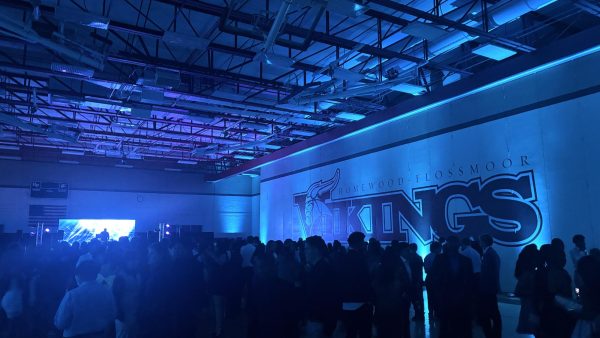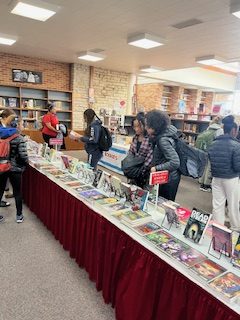Black Lives Matter Influences the Community
Black Lives Matter sign in the H-F community.
The H-F curriculum and community has stood in solidarity with the Black Lives Matter movement.
After the tragic events that happened in the spring and throughout the summer that involved George Floyd, Breonna Taylor and Sean Reed, the Black Lives Matter movement came back to the forefront.
Black Lives Matter “was founded in 2013 in response to the acquittal of Trayvon Martin’s murderer,” according to the group’s website. They encourage people to “join the movement to fight for freedom, liberation and justice.”
When the Black Lives Matter protests erupted after the police footage of George Floyd’s death was released, the Homewood and Flossmoor communities protested in solidarity.
According to the H-F Chronicle, “Several hundred demonstrators marched in a 4.2- mile loop filling major thoroughfares from curb to curb for almost two hours.”
These protests started and ended in Patriots Park in Flossmoor.
Although the protests were peaceful and inspiring, some question whether or not it will facilitate the needed change.
“Yes it can,” recent H-F graduate and participant in the summer’s protests, Abria Smith said. “Only if all people stand up to support and help African – Americans fight for justice, for the loss of countless Black lives being taken just for the color of their skin.”
Many are skeptical of change, but for Smith, she sees this movement as a game changer for the H-F community. “Change takes time, heart, unity and true effort from all people. This isn’t a process that can be rushed,” Smith said.
All of this is such a drastic moment in history. Jennifer Hester Schalk, the new Director of Curriculum at H-F, has 20 years of leadership experience and is an advocate for cultural recognition within the curriculum.
“As the Director of Curriculum, Instructor and Professional Development for Homewood-Flossmoor High School, I align with the district’s views that the BLM movement is extremely important,” Hester said. “We want each student to see themselves in their learning experiences and continue to build their cultural and individual identities as well as build and appreciation of other cultures.”
In history classes, students are openly expressing their thoughts and views on this, said Jon Elfner, a U.S. History teacher here at H-F.
“One encouraging thing I am seeing in my students right now is greater awareness of current events that I have ever seen before. It’s up to us as history teachers to answer students’ increased engagement as a result of Black Lives Matter, to see how the past contributed to modern day America,” Elfner said.
English classes, too, are encouraging students to express their opinions and are looking for ways to make the curriculum more inclusive.
According to Janet Daniels, the English Department Chair, “In general, our department is always seeking to become more culturally responsive. This year, we are using a scorecard created by NYU’s Steinhardt School of Culture, Education and Human Development to better reflect on the books and units we teach in order to guide our future instruction and text adoptions.”
There is all one common denominator that the community seems to agree on: change won’t just happen overnight.





